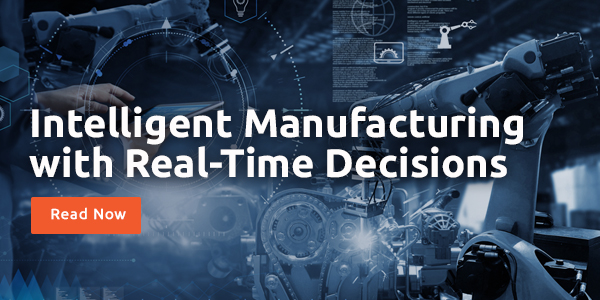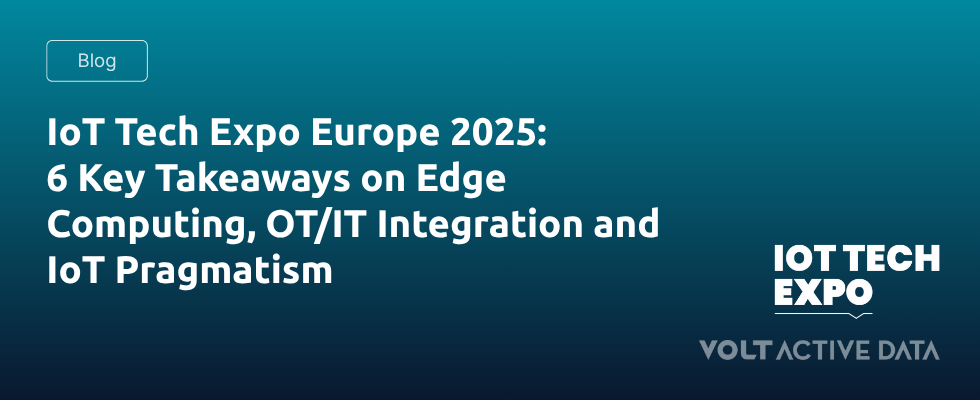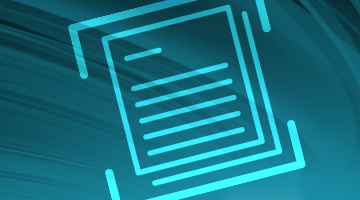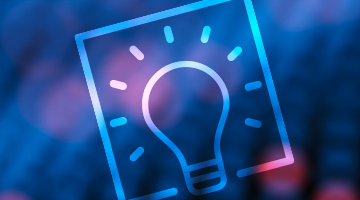Key Takeaways
- Edge computing is becoming the “first point of value creation” in real-time systems.
- The fusion of AI and IoT is driving industrial transformation, enabling autonomy and responsiveness at the edge.
- Predictive maintenance is evolving with smart sensors and edge AI, shifting from time-based to data-centric scheduling, but still requiring expert oversight.
- Self-healing systems are crucial for resilience in complex edge networks, enabling autonomous operations and always-on reliability.
- Agentic AI is emerging at the edge, enabling real-time decision-making in sectors like manufacturing through AI agents.
Last week, I spent two intense days at the IoT Tech Expo Europe 2025 in the RAI Amsterdam, and what an experience it was. The place was absolutely buzzing, with thousands of IoT professionals, hundreds of exhibitors, a ton of bright students, and a fascinating mix of industrial IoT and enterprise use cases. After soaking it all in, I came away with some clear key takeaways confirming major technology shifts in the industry.
A few central ideas really jumped out at me:
Table Of Contents
1. Edge Computing is Mainstream
The conversation has shifted from “send everything to the cloud” to “process what you can at the edge.” By filtering and analysing data locally, businesses save massively on cloud ingress costs while also reducing latency for time-critical decisions. I had several discussions with folks from various verticals who had a desire to run anomaly detection or predictive maintenance at the edge, with only the essential data flowing upstream. Edge computing is now a foundational layer for large-scale IoT deployments.
2. IoT Devices Everywhere, Value in the Data
The expo floor was filled with sensor and device manufacturers, from industrial to financial services to transportation/aviation. But almost all were looking for ways to maximise the value of the data their devices produce. The hardware is ready, but the differentiator is clearly in the data processing layer.
3. Bridging the Critical OT/IT Data Gap
We (Volt) hosted a speaker session on bridging the OT/IT data divide. In many organisations, Operational Technology (OT) data and Information Technology (IT) systems still live in separate worlds. We focused on how to unify these flows in real time so that IoT deployments can deliver business impact instead of creating silos. The strong engagement we saw suggests that the challenge of OT/IT integration is finally a priority for companies.
4. AI: from Hype to Clarity
Another noticeable shift was around AI. We have moved on from the hype cycle, and the conversations now are more grounded and practical:
- Agentic AI taking on specific, well-bounded tasks.
- Machine learning models are doing the heavy lifting in IoT contexts, from anomaly detection to predictive maintenance.
It’s a reminder that AI isn’t magic dust; it’s about choosing the right tool for the right job. In industrial IoT, this often means utilizing good, proven ML models in the right place, rather than chasing the next buzzword.
5. Cross-industry Adoption and Ecosystem Pull
While manufacturing still leads in IoT adoption, I spoke with people from finance, transportation, and utilities who are equally eager to apply these ideas. That mix reinforces that IoT is no longer niche.It’s becoming part of the broader enterprise data ecosystem.
6. Core Challenges: Integration, Security, and Scalability
Integration, security, and scalability were recurring themes. The market is clearly maturing and moving toward IoT pragmatism, but these fundamental hurdles haven’t disappeared.
Put these together, and the core message is simple: IoT is now all about pragmatism. The industry has evolved beyond basic connectivity and is now focused on delivering useful and secure connections at scale. The collision of edge computing, device manufacturing, grounded AI, and serious OT/IT integration at this event highlights the future.
Final Thoughts
My final key takeaway from the IoT Tech Expo Amsterdam 2025? The next phase of IoT is defined by real-world value, and the best companies will be those that effectively unify these traditionally separate technologies.




